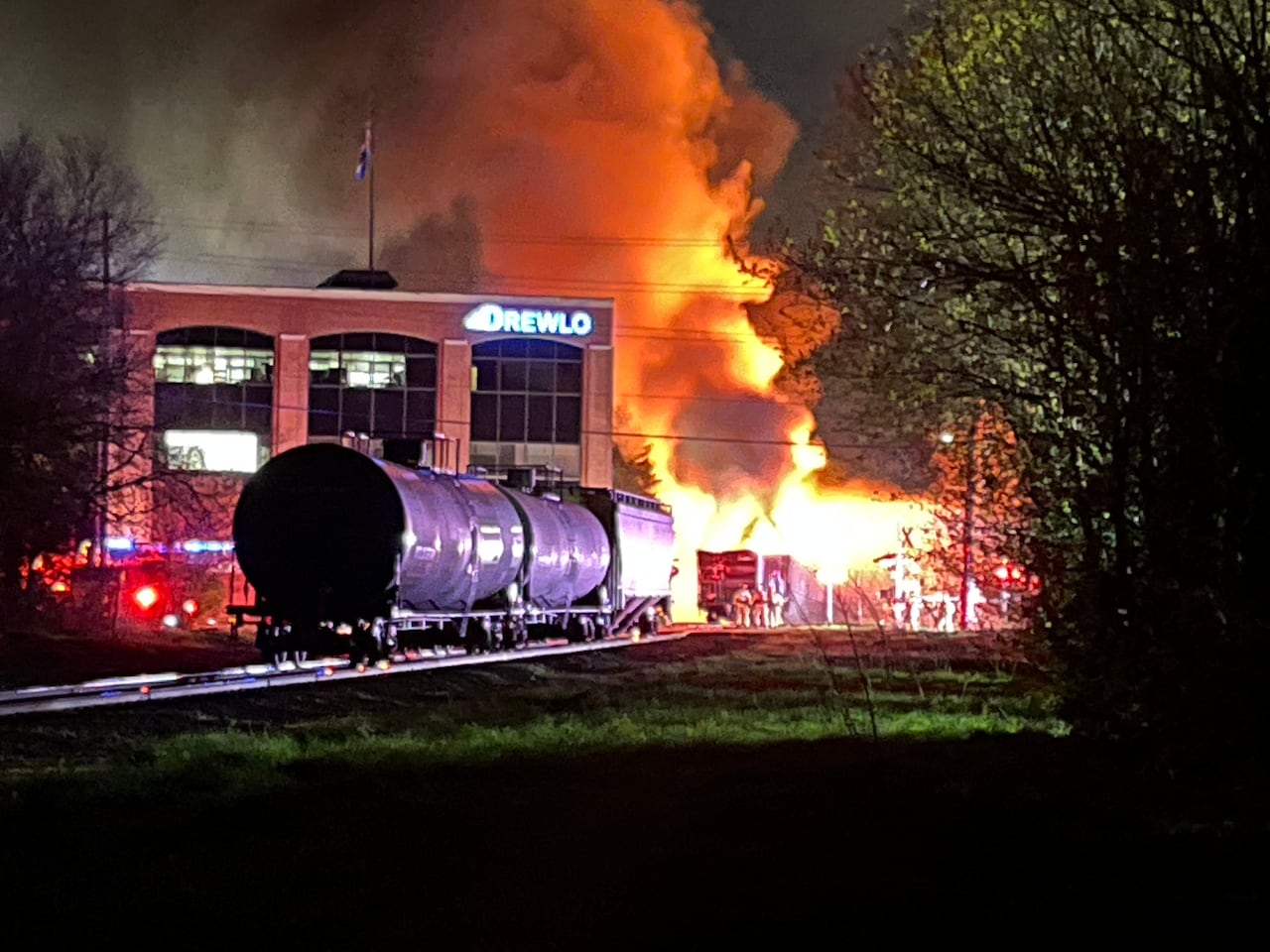
EXHAUST SPARKS LIKELY CAUSED CPKC TRAIN TO IGNITE BEFORE ROLLING THROUGH DOWNTOWN LONDON, ONT.: TSB
Sparks caused by a locomotive's exhaust system likely started the sequence of events that ended in flaming train cars barrelling through downtown London, Ont., in late April, the Transportation Safety Board (TSB) of Canada says.
Once the flames took hold, they were likely spread to other train cars because of the airflow caused by the train's movement, the regulatory body said in a written statement on Wednesday.
The train and railway are owned and operated by Canadian Pacific Kansas City (CPKC), which said the locomotives on that train were inspected in the days before the fire as part of regular inspection procedures, and again following the fire.
"No mechanical issues with the locomotives' exhaust were found," a spokesperson for the rail company told CBC News in an email. The railway said it is still investigating the cause of the fire.
The TSB said no further investigation is necessary because it wouldn't produce "any systemic safety benefits." The investigation they did do, a Class 5 probe, is not comprehensive and doesn't come with a full report, the agency said in a statement.
In an email to CBC, the investigative agency wouldn't say whether train crews called 911 when they realized the train was on fire. The TSB would only say the train crew "made all appropriate notifications in accordance with CPKC's emergency response protocols" and "any and all relevant information obtained under the Canadian Transportation Accident Investigation and Safety Board Act is confidential. As such we will not be sharing any further details as to specifics of this incident."
On the night of April 21, wooden railway ties soaked in flammable creosote and packed into several railway cars caught fire somewhere between Strathroy and London before the train made its way through London, coming to a stop in a downtown residential neighbourhood.
Damage to train, building
"Once the train crew became aware of the fire on their train [between Strathroy and London], they immediately stopped and cut away from the tail end of their train, isolating the six open top gondola cars," the TSB statement says. "They then slowly pulled the cars to a safe location just east of the Waterloo Street crossing adjacent to a commercial fire hydrant."
Strathroy is about 40 kilometres west of London.
Fire officials were waiting and ready at that hydrant to extinguish the train cars when they came to a stop, according to the statement.
The day after the fire, London Fire officials thanked witnesses in the city who called 911 to inform them of the blaze. Although no one was injured, damage was estimated at $25,000 to rail cars and $10,000 to the office building used by Drewlo Holdings in the area.
After the incident, CPKC issued a statement saying the location the train stopped in allowed crews to properly extinguish the fire.
Neither the Transportation Safety Board nor the railway have said where along the route the crew noticed flames were shooting out of the top of the open rail cars, or whether the crew called 911.
In an email, a CKPC spokesperson said "fire officials have praised the train crew's actions and the effectiveness of the information shared between the crew and emergency officials, all of which contributed to the fire being effectively responded to while protecting public safety. That included the moving of other empty rail cars. As stated by the TSB, the crew followed proper procedures."
CPKC has not said what kind of hazardous materials were on board the train and where along the route the crew realized the cargo was on fire.
2024-05-08T19:15:38Z dg43tfdfdgfd